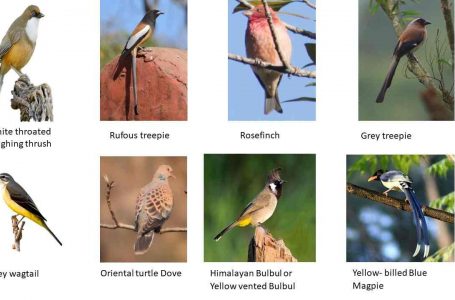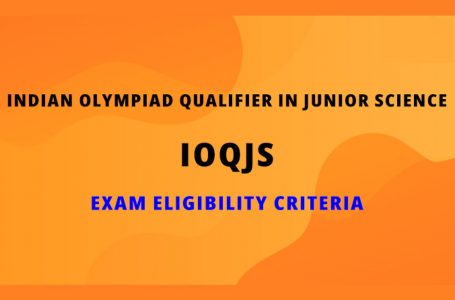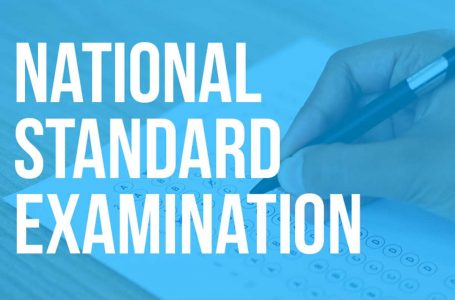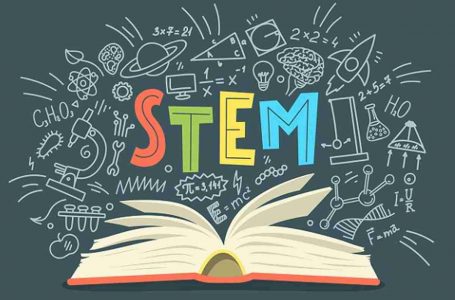Backward Classes
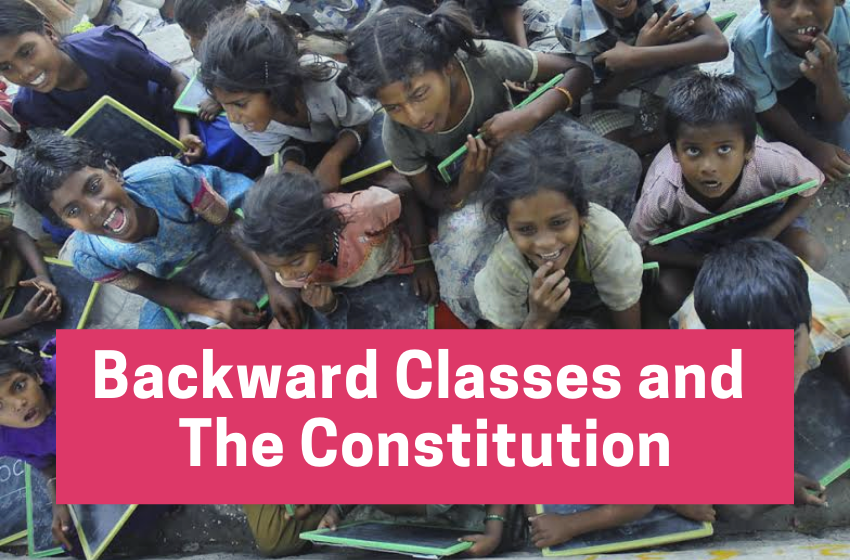
The backward classes do not define by the Constitution of India but the backward classes refer to the stratum of people who are educationally and economically less privileged compared to other classes in the society. However, later on, the President established a commission for the welfare regarding the conditions of the backward classes educationally as well as socially under Article 340 which was authorized to investigate the conditions of backward classes by appointing a commission. Structural standards are maintained to the different relationships between the prevailing group and the subordinate in each society and by providing various forms of disparity to the backward classes, these norms act as structural obstacles.
Table of Contents
Backward Class and the Constitution
On 29th January 1953 after the order passed by the president, the first backward class commission was held and established under the chairmanship of Kaka Kalelkar, and later on 30th March 1955, the report of the entire country’s 2,399 backward classes and communities were submitted and prepared a list through which 837 groups had been categorized as the “most backward”.
The final reports of these commissions to determine backwardness are recommended as “caste as the criteria” however, the report was declined by the government due to the fear that the caste and communities excluded from the backward classes may not be considered by the commission. Below are the some most notable recommendation which were made by the Kalelkar commission. Let’s have a look at these commissions:
- In the census board of 1961, the commission undertakes caste-wise enumeration of the population.
- Treating all women as “backward” as a class.
- Relating the social backwardness of a class of the Indian society in the traditional caste hierarchy to its low position.
- Provides 70% seats of reservation of the backward class students qualified in all professional and technical institutions.
- Reservation of vacancies of other backward classes in all local bodies as well as government sectors.
Definitional Issues of Backward Classes
There is a list of some definitional issues in terms of backward classes which were raised by the people and the society mentioned below in points.
- The term ‘backward classes’ originally defined since the colonial times due to the lack of any clear definition parameters with including and excluding the group regarding the collection as backward.
- The term ‘backward classes’ remains imprecise even at the time of constitutional drafting and debate took place in the matter of its definition.
- The debates of the Constitutional Assembly in which the ‘backward classes’ term was used in two broad ways: the first usage is the inclusion group needed preferential treatment of all the section of the society and second usage term used was as the “Other Backward Classes”.
- The category of the ‘backward classes’ was not given such preferences as compared to the categories of the Scheduled Caste (SC) and Scheduled Tribes (ST).
- The category of the ‘backward classes’ denoted as the unprivileged and marginalized group of people in the society.
Characteristics of the Backward Classes
The backward classes suffer from many disabilities, dishonors, and disadvantages in the society such as social and economic problems, poverty, illiteracy, low status, etc., which they have to inherited as only being born in low tribes or caste. The other group of the society does not accept them due to their lower status whereas the Constitution of India is still silent to define the backward classes in the society.
Structural discrimination faced by the Backward Class People
The structural discrimination faced by the backward classes is explained below in some points:
- In India, the structural discrimination experienced by the backward people is generally based on ethnic identities, caste, color, gender, and class that has adversely affected the life and health of these people living in society.
- Being the member of the backward classes, women also face dual discrimination of specific class, culture, or caste group while experiencing gender issues. The women of this class have given less importance and rights and less control over the resources. They can’t even speak up on the important decisions that are related to their life personally. Moreover, the women of this class have got married at an early age and the women’s health gets unfavorably affected by childbearing.
- The major problem that arises in the backward classes is that the girl child gets married before the age of 18 years which is an officially illegal act done by the backward people as according to the survey conducted in 2002-04 and 2006 as well by the District level Household Survey Department. They highlighted the effects of women’s health by reporting the maternal mortality which is rising higher and trending in India.
- According to the National Family Survey conducted in the year 2000 reports in the ratio of 540 deaths per 10,000 live births which varies between rural to urban sectors of the society, and the death mostly occurs from avoidable causes happens in the backward region of the society.
- Dalits are the caste that does not refer to the suggested group of people who are helpless or poor, or in a state of social disability. In India, which is a caste-dominating country. Dalits are referring to those communities whose Human Rights have been dishonored and disrespected sternly. At earlier times, they were used to be called “Untouchables” as they had lower jobs such as sweeper, scavengers, cobblers, etc.
Other Backward Classes (OBC)
OBC is a specific group of community that qualifies as backward on the common basis of a complex set of educational, economical, and social criteria which is specified by the government of India under the National Commission on Backward Classes (NCBC) to ensure its development towards the society, economic and educational welfare such as in India, the government has provided the 27% reservation in the higher education and public sector employment to the OBCs.
Backward Classes – FAQs
Q1. Are the OBC and BC are same?
Ans. The term OBC stands for Other Backward Classes whereas BC stands for the Backward Classes. But most of the time the OBC is written as simply BC regarding as the short term generally avoiding ‘O’ due to the purpose of short or fast typing of the fact that Backward Classes itself contains all types of classes which are usually backward in society. Therefore, OBC and BC being different in criteria but both are the same thing.
Q2. How many castes are included in the list obtained by the government of India for the BC? Explain.
Ans. According to the member-secretary of the commission, A Krishnamohan there are 74 castes included in the list obtained by the government of India for BC which includes Telaga, Balija, Kapu, and Ontario communities which takes place under the active consideration of the Andhra Pradesh Commission of Backward Classes (APCBC). This commission has also prepared an integrated detailed study manual survey to depicts the economic, social, and educational backwardness of communities state-wise and submitted the list to the government asking the government to conduct the Smart Pulse Survey (SPS) to determining the economic and social communities backwardness in each state of the country as a precursor to declare the backward classes as a part of any caste.
Q3. Who looks after the backward classes and what comes under these classes?
Ans. The Backward Classes Cell (BCC) looks after the affairs of the backward classes in the Ministry of Home Affairs since 1985 and in the year 1985, the separate Ministry of Welfare was created in which the matters were then transferred to the new Ministry of the Scheduled Castes, Scheduled Tribes, Minorities (Backward Classes), and Other Backward Classes. These Ministries look after the planning, implementation, and policy of all the programmes relating to the economic and social welfare of the backward classes people and society.
Q4. What do you mean by NCBC?
Ans. National Commission of Backward Classes (NCBC) is a Constitutional body of India which comes under the Ministry of Social and Justice Empowerment in Article 338B. It consists of 19 members as Chairperson, Vice-Chairperson, 3 Members, Secretary, Administration Wings, Deputy Secretary, Under Secretary, Section Officer, Account Officer, Research Wing, Joint Director, 2 Research Officers, 4 Research Investigators. And the Constitutional provision of the NCBC is the prohibition of discrimination in the matter of caste, color, religion, place of birth, gender, or race and providing inequality in the matters of public employment. The other various work has been performed by the NCBC such as preparing annual reports, commission reports, and tour reports of all the surveys done, organizing commission meetings, etc.
Q5. Name some of the castes which are categorized as the Backward classes by the government of India.
Ans. The list consisting the name of some of the castes categorized as the backward classes by the government of India are shown in the table given below.
| S.No. | Name of Castes |
| 1. | Raigar. |
| 2. | Bagria. |
| 3. | Ghasi, Ghaiyara or Ghosi. |
| 4. | Kahar, Jinwar, or Dinwar. |
| 5. | Ghirath including Chang & Bhati. |
| 6. | Rachar, Rechara, or Re. |
| 7. | Nar. |
| 8. | Kumi. |
| 9. | Kanjar or Kanchan. |
| 10. | Gwaria, Gauria or Gawar. |
| 11. | Daiya. |
| 12. | Chirimar. |
| 13. | Changar. |
| 14. | Beta, Hensi, or Hesi. |
| 15. | Barra. |
| 16. | Aheria, Aheri, Heri, Naik, Thori or Turi. |
